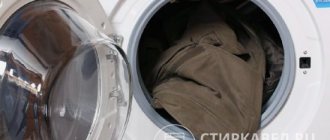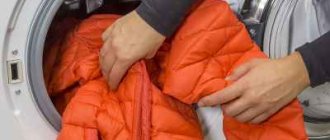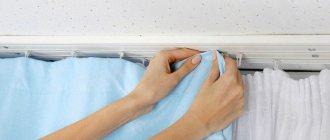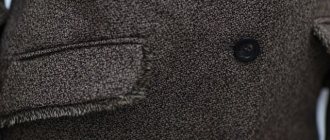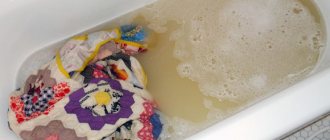A warm, soft blanket is a frequent companion on cold autumn evenings and a symbol of home comfort. From time to time it, along with other things, goes into the wash. The most convenient thing would be to just put it in the machine and press the button. But there are tricks to caring for a blanket.
Is it possible to wash a blanket in a washing machine?
To answer whether it is possible or not, you need to consider several factors. The choice of cleaning method depends on the blanket itself and the characteristics of the washing machine.
Bedspreads are made from natural fabrics and synthetics. Each fabric has its own care recommendations. There are three options:
- handwash;
- machine washable;
- dry cleaning
The answer to the first question is yes, you can. Here the second one arises: how to wash a blanket in a washing machine so that it does not spoil?
Each “washing machine” is designed for a certain weight. If the product is too large, it may not be able to pull. Important detail: some fabrics absorb a lot of water and become heavier when wet. You need to focus not on the initial weight, but on the acquired weight. Attempting to force the machine to work under overload can lead to unpleasant consequences, including breakdown.
Material determination and preparation
Before washing, it is recommended to study the composition of the blanket. In most cases this happens:
- bamboo;
- fleece;
- wool;
- microfiber and other synthetic fabrics.
On the attached label you can read: in what mode the blanket is washed, what temperature to set, spin cycle, etc. The machine must have a load of at least four kilograms. Thin bedspreads can simply be crumpled or folded in half, but bulky items should be distributed over a drum or rolled up. Choose a detergent based on the type of material or manufacturer’s recommendations.
Advice! It is better to purchase gel, as it dissolves quickly, forms less foam and washes out well.
Selecting a mode for washing a blanket
A modern automatic washing machine can operate in 12–14 modes. Unnecessarily, they usually use only half of the functions.
Cotton/linen
One of the “hottest” and most intense. Washing occurs at a temperature of 90º at a speed of 1000 rpm. Suitable for children's clothes or when seriously soiled. At such a high temperature, things practically boil and sterilize.
Kids clothes
Similar to the previous one in temperature and intensity. To this is added a thorough rinsing. This mode is guaranteed to remove stains, get rid of dust mites and remove residues of washing powder.
Synthetics
The washing temperature in the mode is much lower - no more than 40º. You can increase it by hand, but not all synthetic fabrics can be washed in hot water. Otherwise called “Mixed Fabrics”, this mode allows you to wash several different fabrics at the same time.
Wool
The more natural the fabric, the more delicate the effect becomes. Therefore, the washing mode for wool does not require either too high a temperature (40º) or high speed (800 rpm). Suitable not only for pure wool, but also for yarn with a small percentage of wool in the composition.
Delicate
Analogous to the previous mode. Another name for this is “Gentle Wash”. Suitable for natural, especially delicate fabrics that require careful care. This category includes silk blouses, ties, fine linens and shawls. Temperature - low, speed - no more than 400 rpm.
Manual mode
Some manufacturers do not separate delicate and manual modes. It is suitable when you need to wash items that cannot withstand regular machine washing. The effect on the fabric is gentle, the number of revolutions per minute is minimal.
Quick wash
The operating algorithm is the same. The entire cycle only takes about 40 minutes. Water temperature is 30–40º. Suitable for lightly soiled items or underwear.
Daily wash
In this mode, they wash things that have not gotten very dirty. The drum does not fill completely. One of the most economical modes in terms of time and energy consumption. Washing takes about 50 minutes, the water temperature does not exceed 30º.
Intensive wash
It is used when the dirt is so strong that it cannot be washed normally. Suitable only for linen or cotton, contraindicated for delicate fabrics. Water temperature is 90–95º.
Prewash
This mode is turned on when the item is heavily soiled. Essentially, this is a pre-soak before the main wash. Temperature is low.
Soak
Almost no different from the previous mode. Very dirty items are soaked and prepared for the main wash at a temperature of about 30º.
Night wash
Normal washing, but in silence. During the process, no mechanism is activated that creates noise. The wash completion signal does not work.
Modes for economical use of resources
Special modes that consume less electricity and water. Washing takes less time. In some cases - up to half an hour.
Intelligent programs
Some washing machines are called “smart”. They can control the formation of foam, protect against leaks, refresh waterproof fabrics, distribute things evenly in the drum, etc.
So how to wash a blanket in a machine? The mode is selected depending on the fabric. The required information is indicated on the label.
Before washing
To understand what exactly to do, look at the label on the item. It contains all the information: at what degrees is machine washing possible, or is it not possible at all. The recommendations must be followed, otherwise the item will be damaged.
If dry cleaning is recommended, you just need to fold it and take it away, but if it can be washed, you don’t need to start by putting it in the drum of the machine. Perhaps you can not wash it at all?
If the blanket still looks fresh and less than six months have passed since the last wash, but the smell of cake has already appeared, you can simply dry it well and get rid of the dust the old way - beat it out with a special beater.
If there is no smell, but there are stains, you can also not wash the entire blanket, but simply remove the stain. Vinegar or lemon juice mixed with soda can help with mild stains; carpet cleaner can help with heavy stains. Old stains can be removed by dry cleaning.
What should the water temperature be when washing the product?
Blankets should not be washed in very hot water. The optimal temperature is from 30 to 40º. The exact numbers for a particular item depend on the fabric and its properties. The more tender it is, the cooler the temperature should be.
Cotton, polyester, micromodal and other synthetics can withstand 40º, but wool and silk are washed only at 30º with great care. If the fabric of the blanket is mixed, it is washed at a low temperature, taking into account the properties of the fibers included in the composition.
Failure to comply with the temperature conditions can lead to deformation and shrinkage of the product. If it is heavily soiled, cold water will not work - stains may remain on the blanket. It is better to choose another removal method.
Keep in mind! Some sources indicate a permissible temperature of 60º, but it is better not to wash in water hotter than 40º.
Tips for caring for a blanket
Even the most careful washing negatively affects the quality of the bedspread and reduces its service life. To clean the product in an automatic machine less often, you need to follow the following care rules:
- It is recommended to shake out the bedspread every week on the balcony or outside. This allows you to eliminate accumulated dust, but does not harm the product itself.
- A homemade blanket accumulates not only dirt, but also unpleasant odors. To get rid of dust and odors, it is recommended to ventilate it more often, for example, by taking it out onto the balcony or simply hanging it in a room with good access to fresh air.
- From time to time, the bedspread can be gently cleaned with a dry clothes brush. This will remove dust, hairs and fur from it.
- If a stain has formed on the bedspread, you need to clean it immediately before the dirt is absorbed. It is not necessary to wash the entire item; you can simply treat the stained area with soapy water and dry it.
Regular dry brushing will reduce the frequency of washing your bedspread
It is recommended to store the bedspread in a closet in a special breathable bag or in a roll of cotton fabric. In this case, it will retain its beautiful appearance and will not be damaged by moths.
Attention! You should not put the bedspread in a plastic bag; the fabric will not be able to “breathe” and will acquire an unpleasant odor.
How to machine wash: a guide
In order to wash a blanket in a washing machine, you need to follow the standard algorithm of actions:
- Check the blanket for damage and stains. Remove damage and treat stains with a special product.
- Place in drum.
- Select the desired program at a temperature not exceeding the recommended numbers.
- If possible, select the minimum number of revolutions.
- Use double rinse.
- Do not use the spin function.
- Do not use the drying function.
Important! It is better to wash the blanket separately, without powder, using a liquid detergent.
Features of washing different bedspreads
Fleece
Fleece is synthetic, so the product requires careful handling. Wash fleece blankets in water at a temperature not exceeding 40º with a liquid product that does not contain chlorine. Spin cannot be used. As a last resort - minimal.
Plush
Plush is a popular upholstery material for furniture and toys. Plush blankets can be washed either by hand or in the washing machine on a delicate cycle. Water temperature - no more than 30º, number of revolutions - no more than 400.
Woolen
Wool is a material that requires special attention. It is capable of absorbing large amounts of moisture. Therefore, the weight of a wool blanket increases significantly during washing. It is worth paying attention to the capabilities of the washing machine in advance. A machine with a load of less than 4.5 kg is not suitable for a wool blanket.
Wool does not tolerate high temperatures, so it is better to wash items made from it at a temperature of about 30º. Spinning is not recommended.
Plaid "grass"
This variety is particularly soft. They are two-layer. The first layer is soft microfiber, and the second is fluffy. One of the features is the pile, the length of which reaches 3 cm.
For some models of this type, machine washing is not recommended. If possible, it is done in a delicate mode, at a temperature of no more than 30º with a chlorine-free product. Spinning is not recommended.
Important! Before washing, items with long pile are either shaken out or cleaned with a vacuum cleaner.
Handwash
This option takes a lot of effort and time, but it turns out to be the only one for some things with a delicate composition. An indication of the need for hand washing implies that during the process, the product will not be intensively wrinkled, stretched, or twisted during spinning; As a detergent, you should choose a soft washing powder or liquid detergent for woolen items.
To solve the problem of where to wash a large blanket, you will need a container. Since troughs have gone out of fashion, bathtubs have played that role. If your apartment only has a shower, you can use its tray.
The water temperature should not exceed 40°C: if there is no thermometer, then “to the touch” it is defined as warm, not hot. When immersed in boiling water, a thing made of natural fibers may “shrink” - that is, the threads will shrink, the bedspread will decrease in size and lose its shape.
The process itself consists of the following stages:
- soaking in soapy water;
- washing away dirt;
- rinsing;
- plum.
Handwash
After finishing, it makes sense to leave the bedspread to lie for some time at the bottom of the bath to allow the remaining water to drain off. Then it should be rolled into a tight roll and placed vertically - this will make further drying easier.
How to dry a blanket after washing
It is not recommended to dry blankets vertically, especially while water is draining. They are dried in a horizontal position outdoors in dry weather, without contact with direct sun. This is done to avoid product deformation. This applies to both natural fabrics and synthetics. For example, fleece wrinkles easily, so when drying on a line, a crease may appear at the fold.
It is better to keep the drying blanket away from radiators and heaters and let it dry on its own.
How to dry a blanket correctly
In order for the blanket to retain its shape, color and warming properties after washing, it is important to properly dry the product:
- It is best to place the blanket to dry in a horizontal position so that it does not stretch. A special clothes dryer rack works well. To prevent water from dripping from the product onto the floor, you can place terry towels or thick cotton fabric underneath.
- The item cannot be dried in bright sun or in the wind - the sun's rays and a strong draft will negatively affect the fabric and make it stiffer. In addition, under the influence of ultraviolet radiation, the bedspread may fade.
- A blanket made of wool or plush can take quite a long time to dry. But you can’t hang it on a radiator, on a heater or next to a stove - high-temperature exposure will deform the fabric.
- It is undesirable to hang a blanket on a rope or bar, much less leave it not completely straightened. The product will not only stretch, but will also warp, so it will no longer be so convenient to use.
It is better to dry the blanket on a special horizontal rack
The listed rules apply to both natural and synthetic blankets. Bedspreads seem resistant to deformation only at first glance, but in reality, improper washing and drying can significantly affect their condition.
